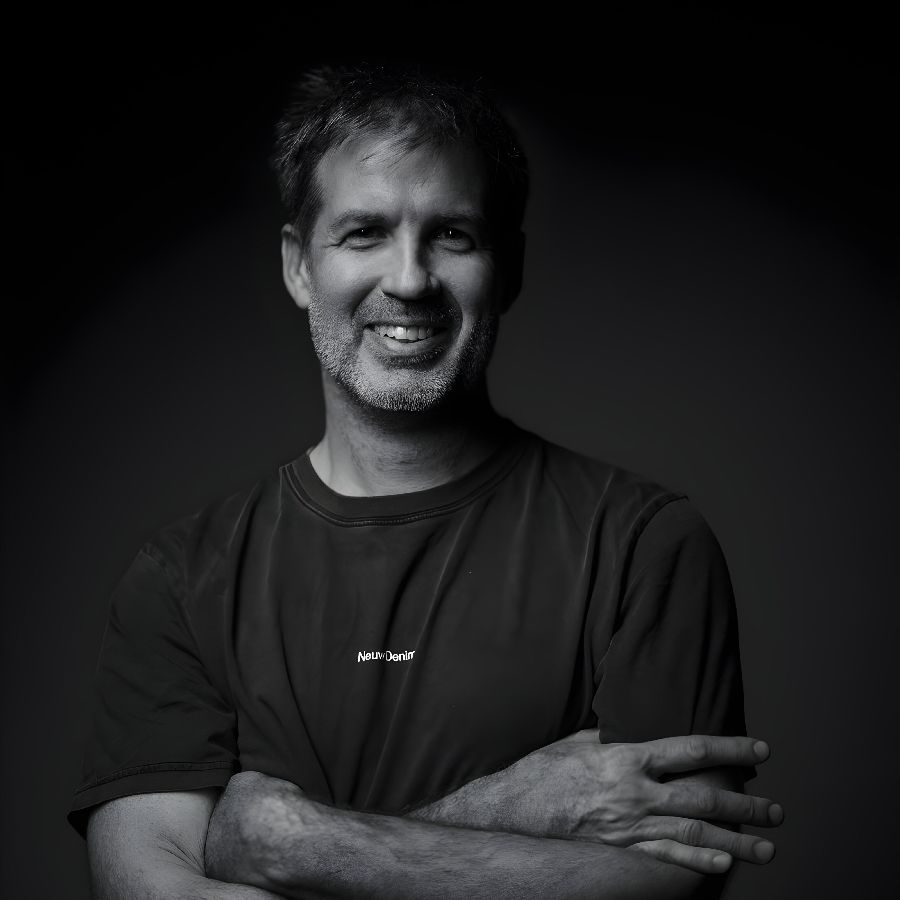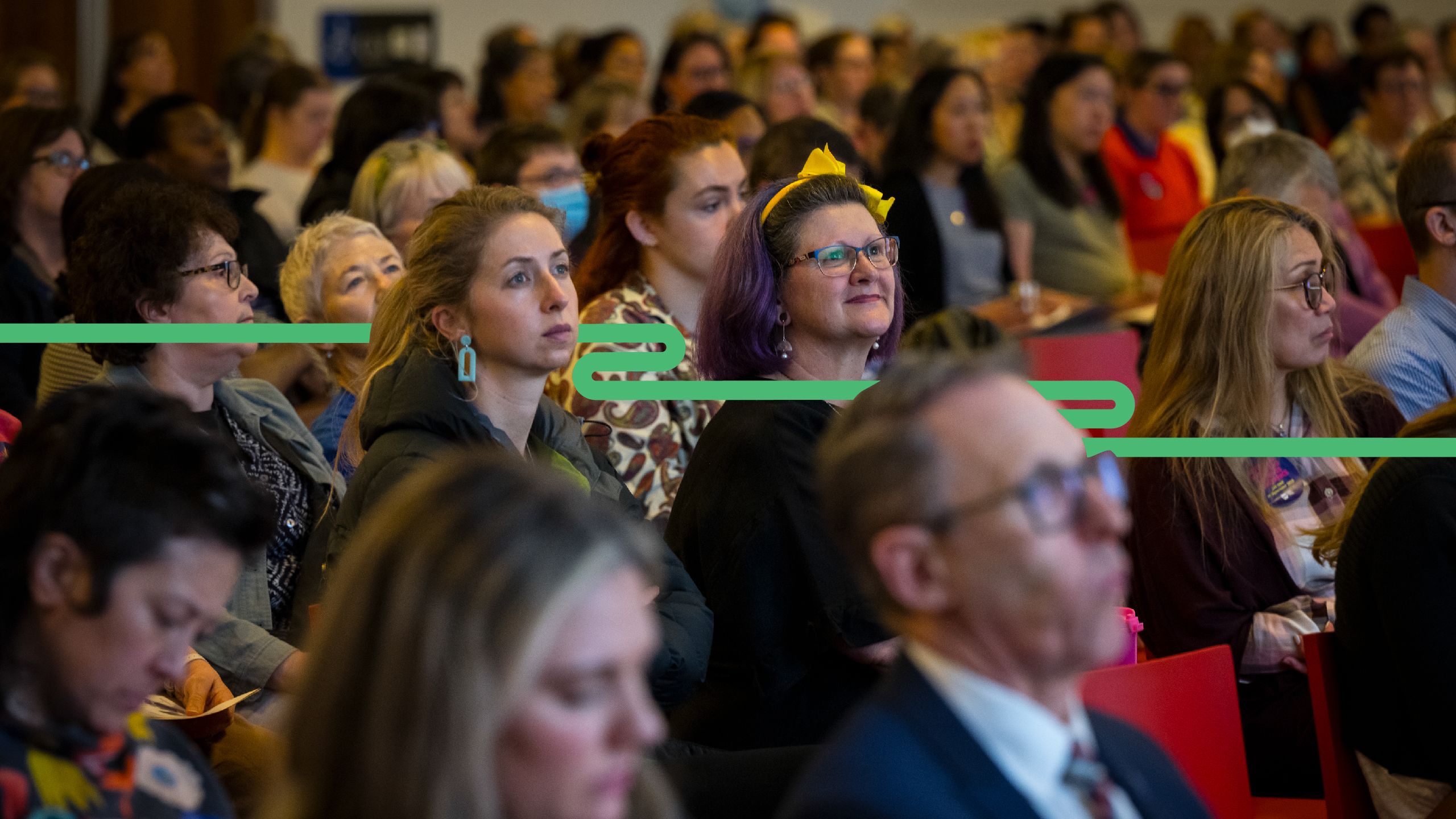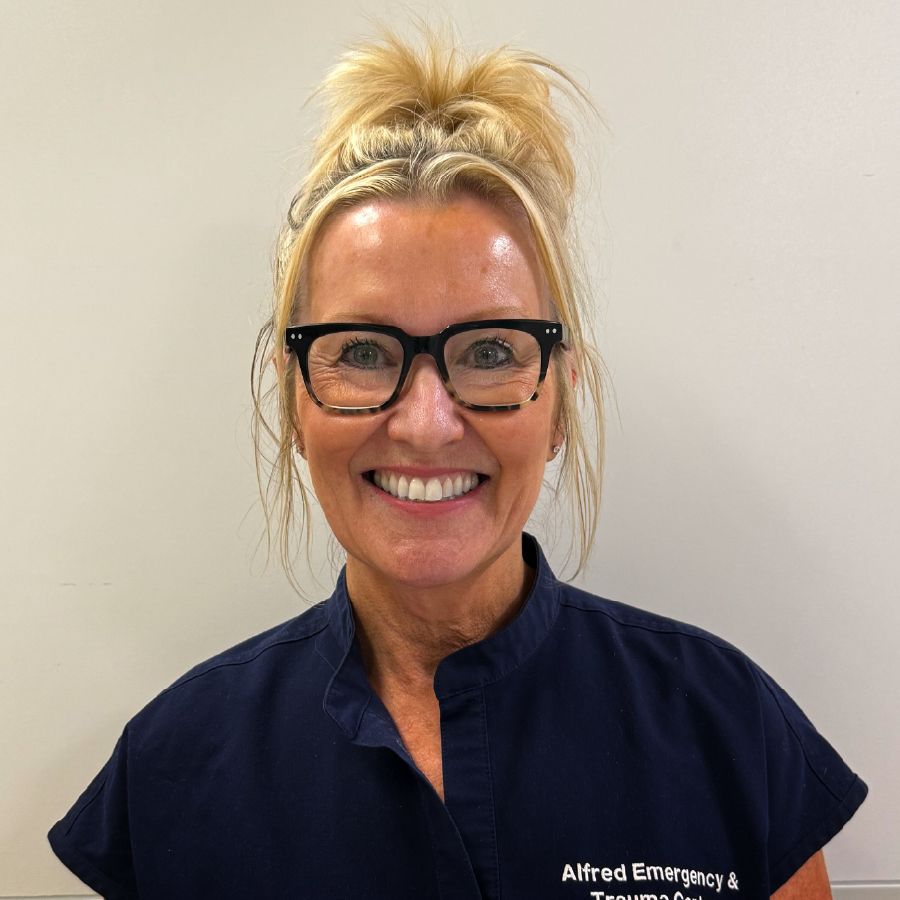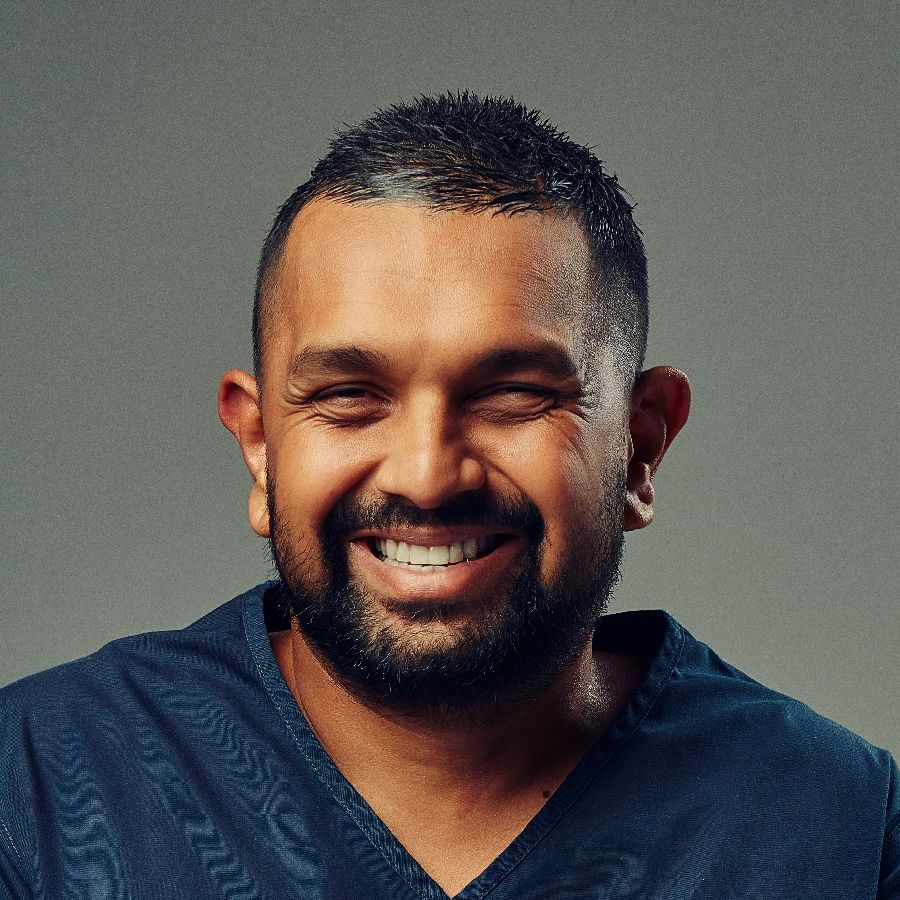SPEAKERS

FEATURED SPEAKERS

Sue Smith, CCRN
Alfred Emergency and Trauma Centre Co-ordinator, P.A.R.T.Y. Program on preventing alcohol and risk-related trauma in youth
‘If the P.A.R.T.Y Program can stop even just one young person from being involved in trauma, then it has worked. That’s why I am really passionate about it.’

Joe Brumm
Australian animator, director and writer and creator of Bluey on making big messages small
‘Without Bluey I don’t think I would have learned how much a good story can mean to audiences, especially when they’re going through hard times. That’s been the biggest surprise.’

Dr Dinesh Palipana OAM
Disability advocate, researcher, 2021 Queensland Australian of the Year, on disability advocacy and being a voice for good
‘One of the reasons why I’m so excited to speak at the ANMF Australian Nurses and Midwives Conference is because a big part of my journey has been nurses.’


You’re invited to a P.A.R.T.Y at the Alfred – CCRN Sue Smith on preventing alcohol and other risk-related trauma
A CCRN at Alfred Health, Sue Smith has spent her entire career in the emergency department. As she has been nursing since 1986, she has seen enough trauma to last 1000 lifetimes. It seems little wonder, therefore, that a key focus of hers for the past decade or so has been the Alfred’s Prevent Alcohol and Risk‐Related Trauma in Youth (P.A.R.T.Y) program.
The P.A.R.T.Y program is an interactive injury awareness and prevention program for young people, offering a rare look at the true impact of trauma. Developed in 1986 by an emergency nurse at Toronto’s Sunnybrook Hospital – the largest trauma centre in Canada – and now operating at dozens of sites around the world, the program aims to reduce death and injury from alcohol, drug and risk-related incidents through exposure to clinical reality.
The P.A.R.T.Y program has been running at The Alfred since 2009 as an initiative of the National Trauma Research Institute. It primarily runs as a single day, in-hospital model for senior school students, who spend the day on site, hearing from nurses, doctors, paramedics, allied health professionals and others as they get a rare first-hand look at the journey of a trauma patient – through the emergency department, ICU, burns and trauma wards, rehab and recovery (if the patient is lucky enough to make it that far). The program can also be run online, via alternative outreach models, and for a range of participant cohorts (such as apprentices or navy recruits, or people referred through the justice system).
Sue has been the coordinator of P.A.R.T.Y at The Alfred since 2018 but has been involved with the program since it began in 2009. ‘And I have loved it from day one,’ she tells ANMF.
She loved it so much, in fact, that she’d even come in on her days off. So when the coordinator role became available, Sue was the natural choice. At the time, it was run by a team of four, including another critical care nurse, a researcher and an admin person. ‘And then COVID hit, and one by one the other three left.’
Now it’s just Sue. But she is so committed to P.A.R.T.Y that she won’t let anything stand in her way. ‘It’s a busy life,’ she says, ‘but I still love it. It helps that I’ve built up very good relationships over the years with everyone who’s been involved in the program – all the staff on the trauma ward, the burns ward, the intensive care ward, all of the allied health people, the doctors: the whole hospital is very supportive of P.A.R.T.Y.’
We know it works
Since 1986, multiple studies have documented the efficacy of the P.A.R.T.Y program. In 2018, for instance, researchers from the National Trauma Research Institute and Monash University concluded that ‘the P.A.R.T.Y. program at The Alfred engaged substantial numbers of youths and achieved significant improvements among key outcome measures’ (Emergency Medicine Australasia).
For Sue, while such studies are important and reflect what she sees on the ground – ‘that is, we know it works’ – the key metric is participants’ engagement.
‘You see them come in at the start of the day, and you know a lot of them are thinking “oh god, here we go”. But throughout the day I can definitely see a change in how they react.’
Sue believes this is because the program is not didactic. It’s not about ‘telling them not to go out and live your life,’ she says. ‘No one’s going to tell them not to go out and take drugs or drink alcohol. P.A.R.T.Y is just about giving them some information to take away at the end of the day, and allowing them to see what can happen if they’re not careful.’
While they’re in the hospital, Sue says, ‘they get unique access to the people involved in the care of a trauma patient, and they see the potential result of one decision you make – be it drugs, alcohol, fatigue, peer pressure. I always say to them: “you are so lucky to be here today. You literally get a backstage pass into the hospital; no one sees what you’re going to see today. Even as a patient or a family member you won’t see what you see today.”’
If the P.A.R.T.Y program ‘can stop even just one young person from being involved in trauma, then it has worked,’ Sue says. ‘That’s why I am really passionate about it.’

The importance of escapism and a good story: Joe Brumm on Bluey, teamwork and the relationship between doctors and nurses
If you have a child under about 10, chances are you are very, very familiar with Bluey. Even if you don’t have children, you likely know about this very, very Australian global phenomenon. And if you come to the ANMF Australian Nurses and Midwives Conference in May, you’ll have a front-row seat to hearing from Bluey creator Joe Brumm in person.
Asked how his presentation relates to nurses and midwives, Joe explains that his primary focus will be the story of how Bluey came about. And while Joe is often singularly associated with the show, he emphasises that it wouldn’t exist without teamwork.
‘I know nurses and midwives rely on being part of really well-functioning team,’ Joe says, ‘so teamwork is definitely a key part of the talk. But I’m not a leadership talker or anything. I just tell the story of Bluey. Whatever message people take from that is up to them.’
As any fan knows, Bluey’s message is often remarkably mature, and widely translatable across many spheres of life. In between the joy and importance of play and imagination – the face-value focus of Bluey – the show is peppered with little lessons about the importance of caring for others, problem-solving and partnership (aka teamwork). Not to mention life as working parents, gender politics and late-stage capitalism.
All are lessons that can be as equally relevant to children as they are to nurses and midwives, professionally and personally.
There are, of course, episodes that are informed more directly by our professional lives. Episodes such as Hospital, Early Baby, Bumpy and the Wise Old Wolfhound or Dad Baby.
‘Hospital features my observations of the relationship between doctors and nurses during my various hospital stays with kids. I’ve heard it’s very accurate!’
Joe describes himself as ‘very un-cavalier, if that’s a word, about what kids should be exposed to. That’s why there’s no monsters. There’s no scary things under the bed. But with episodes such as Hospital or Bumpy,’ he notes, ‘kids can get very scared – especially sensitive kids. They can get a bit freaked out by medical settings and hospitals and people with drips. So I’m careful to not go literal with anything. When Bingo was in the hospital bed, for instance, we had to go easy on what she would be hooked up to.
‘But in terms of the subtext and the adult story,’ he adds, ‘I always try to go for it. Hospital features my observations of the relationship between doctors and nurses during my various hospital stays with kids. I’ve heard it’s very accurate!’
Asked about the biggest lesson he’s learned making Bluey, Joe says there have been a few. ‘But without Bluey I don’t think I would have learned how much a good story – a story that’s really positive – can mean to audiences, especially when they’re going through hard times. That’s been the biggest surprise: just how much a little bit of escapism and a bit of joy through entertainment can provide people when they’re at a low ebb.’
Joe has admitted that at one point in the development of Bluey, he toyed with the idea of the show being far more targeted to adults; he produced a pilot short that included jokes about mastitis, for instance. But in making Bluey the show that it is – a poignant, surreal, emotional, hilarious children’s show about play and parenting – he has achieved something universal.
And now, as fans will be aware, he’s upscaling that universal message to a feature-length Bluey film, due in cinemas in 2027. It’s keeping him pretty busy, he says, but while ‘intense and full on, it’s weirdly more relaxed than being in the middle of the 52-episode run. There’s more time to refine, there’s more time to get it right.’
Based on the existing 154 episodes of Bluey, getting it right is something Joe is pretty good at.

Our work being deeply human, we must be a voice for good – Dr Dinesh Palipana on advocating for those with disabilities
Dinesh Palipana OAM is a doctor. And a lawyer. And a scientist. And an academic. And an advocate. And a published author. And the 2021 Queensland Australian of the Year. And he wouldn’t be where he is without nurses.
‘I had a car accident about 15 years ago,’ Dinesh says. ‘And one of the things that became apparent to me after that accident – and now working in the emergency department – is the urgency of time and the shortness of life. It’s made me want to do as much as I can, so I try to seize every moment.’
That car accident caused a spinal-cord injury that left Dinesh with quadriplegia. Suddenly, he was no longer a medical student, he was a patient. During the several months he spent in hospital, many people told him to forget his dream of becoming a doctor. But he was lucky, he says, to have ‘really passionate people who took risks’ to help him.
‘And one of the reasons why I’m so excited to speak at the ANMF Australian Nurses and Midwives Conference,’ he adds, ‘is because a big part of that journey has been nurses.’
While others doubted, it was an ICU nurse who spent hours with Dinesh trying to figure out how he could cannulate without the use of his fingers. While others said try something else, a midwife took Dinesh under her wing during his obstetrics placement and empowered him with the opportunity to learn.
‘There have been amazing nurses and midwives in my career who have helped me do things, and others who have helped me troubleshoot barriers,’ he says. This help, he explains, made him realise that most of these barriers are in our own minds. ‘It is society putting up barriers, rather than what’s happened to me. Given the chance and having the willingness to attempt things, it’s even surprised me how far we’ve been able to come.’
And Dinesh has plans to go even further. His work as a scientist – which has attracted several million dollars in grant funding – is looking at electrical stimulation and thought control to restore function in people with paralysis. And with several ‘exciting’ advances in science over the years, Dinesh is hopeful that one day he and others like him will be able to stand up again. ‘That’s what we’re working towards.’
Help one person, change the world
In the meantime, Dinesh spends his days helping his patients get back up again through his work as an emergency physician at Gold Coast University Hospital.
‘I love going to work,’ he says. ‘I love the opportunity to be there for someone and to make a difference in their life. But I hated being a patient. It’s so disempowering and scary. I remember how difficult it was, and that definitely informs the way I practice medicine today.’
Inspired by his time as a patient and by the good people – including nurses and midwives – who advocated for him, Dinesh will be speaking at the ANMF Australian Nurses and Midwives Conference on the topic of advocating for those with disabilities and being a voice for good.
‘Going through spinal cord injury and coming to understand disability at the age of 25,’ he explains, ‘one of the things that made the biggest differences to me was having good people to advocate for me to get back to medical school, to start work as a doctor.’
Those good people are abundant in healthcare, and by choosing healthcare as a profession we have been given not just an opportunity to do good, but a platform, Dinesh believes. ‘Society has afforded us the credibility to be a voice,’ he says, ‘and people listen.
‘Yes, our primary job is to deliver good health,’ he continues. ‘But there are a lot of things that interact with the good health of our community: poverty, the environment, natural disasters, housing, transport. We need to be a voice for those things too, if we’re really going to be health advocates.’
If that all feels overwhelming, it’s important not to underestimate the power of helping just one person, Dinesh concludes.
‘My mum says that helping one person might not change the world but it will change the world for them. But I think that you actually do change the world by helping one person. I think that’s what these people [who have helped me] have done, and it’s what my colleagues – the incredible, amazing nurses that I work with – do every day. So take a shot on one person at a time. And when the hard time comes, stand up for what’s right and what’s good.’
